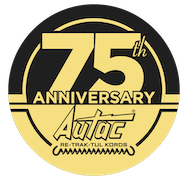Telephone Spiral Cables: A Comprehensive Guide to Coiled Communication Cords
In a world dominated by wireless communication, telephone spiral cables continue to play an essential role in ensuring reliable, clear, and organized wired communication. These cables, known for their coiled, retractable form, are widely used in telephony systems, office equipment, and industrial communication tools. This guide explores the structure, benefits, applications, and tips for selecting high-quality telephone spiral cables.
What Are Telephone Spiral Cables?
Telephone spiral cables, also called coiled telephone cords or retractile phone cords, are electrical cables designed with a spring-like structure. This coiling allows them to stretch when in use and retract when not, minimizing clutter and reducing wear from tangling or kinking.
Typically made from durable PVC or polyurethane jackets and copper conductors, these cords are designed to transmit audio signals effectively, ensuring clear voice communication. The spiral design also helps in cable management, keeping workspaces tidy.
Key Benefits of Using Telephone Spiral Cables
Using telephone spiral cables offers a host of practical advantages, especially in environments where space, organization, and reliability matter.
1. Efficient Space Management
The retractable nature of spiral cables prevents excess slack and keeps cable lengths manageable. This feature helps maintain an organized workspace and reduces tripping hazards.
2. Durability
Constructed from high-quality, flexible materials, telephone spiral cords withstand frequent stretching and retracting. Their design also protects internal conductors from stress and breakage.
3. Signal Clarity
High-grade copper conductors within these cables ensure low resistance and minimal signal loss, supporting clear audio transmission—crucial for telephony and customer service applications.
4. Tangle-Free Use
The coiled design minimizes tangling and knotting, allowing for hassle-free movement and consistent performance.
5. Aesthetic and Professional Appeal
Neatly coiled cords contribute to a clean, professional appearance in office environments. They can also be color-customized to match equipment or branding.
Applications of Telephone Spiral Cables
Despite the rise of wireless communication, telephone spiral cables remain a staple in many settings due to their reliability and cost-effectiveness.
1. Office Telephony Systems
Traditional desk phones, especially in call centers and corporate offices, use spiral cables to connect handsets to phone bases. These cables allow users to move around while speaking without detaching the handset.
2. Industrial Communication Devices
In factories and warehouses, durable telephone cords are used in intercoms and emergency communication systems. Their rugged construction ensures performance in harsh environments.
3. Medical and Hospitality Fields
Hospitals and hotels utilize coiled cords for phones and communication devices, where organized cable management is crucial for safety and accessibility.
4. Home Use
Home phones, especially those with base-to-handset designs, continue to rely on telephone spiral cables for ease of use and mobility.
5. Public Communication Terminals
Public phones and information kiosks often feature coiled cords due to their resilience and ability to withstand constant handling.
How to Choose the Right Telephone Spiral Cable
When selecting a telephone spiral cable, it’s important to evaluate your needs based on the following criteria:
1. Cable Length and Stretch Ratio
Consider both the relaxed and extended length of the cord. Ensure it provides enough stretch for mobility while maintaining a manageable retraction.
2. Material and Jacket Type
Look for cables with high-quality outer jackets like PVC or polyurethane. These materials offer flexibility, resistance to wear, and longevity.
3. Connector Compatibility
Ensure the cable ends match your telephone device. Common connectors include RJ9, RJ11, and RJ12, depending on the device specifications.
4. Number of Conductors
Select the appropriate conductor count based on your phone system. For instance, standard voice lines typically use 2 or 4 conductors.
5. Color and Aesthetic Options
Opt for cables in colors that blend well with your office or home decor, or choose custom-colored cables for brand alignment or organization.
Maintenance Tips for Telephone Spiral Cables
To prolong the life and maintain the performance of your telephone spiral cables, follow these simple care tips:
- Avoid overstretching beyond the recommended extension.
- Keep cables clean and free from dust or liquid spills.
- Inspect periodically for cuts or exposed wires.
- Store devices in a way that prevents unnecessary strain on the cord.
- Replace damaged cords immediately to maintain communication clarity.
Conclusion
Telephone spiral cables remain a dependable solution for wired communication across various sectors. Their unique coiled design, combined with strong signal transmission and space-saving properties, makes them ideal for phones in offices, homes, and industrial settings. By selecting high-quality cords and following basic maintenance practices, users can enjoy long-lasting performance and clear communication.
Whether you’re upgrading your office telephony system or replacing a worn-out handset cord at home, investing in a durable telephone spiral cable ensures seamless connectivity and professional functionality.



Recent Comments